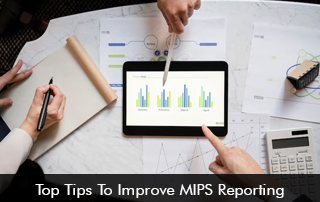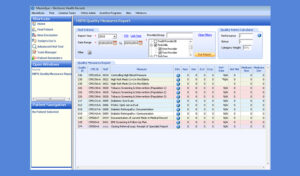Optimized MIPS reporting is essential for healthcare providers seeking to thrive in a value-based care environment. The Merit-based Incentive Payment System (MIPS) is a key component of the Quality Payment Program (QPP). It is designed to incentivize healthcare providers to enhance the quality and efficiency of patient care. Here are our top tips for improved MIPS reporting.
Stay Informed and Updated on MIPS Reporting
One of the foundational pillars for successful MIPS reporting is staying informed about program changes and updates. The Centers for Medicare & Medicaid Services (CMS) regularly releases guidelines, measures, and performance thresholds that impact reporting requirements. Healthcare providers should stay abreast of these changes to ensure their reporting strategies align with the latest regulations. Subscribing to newsletters, participating in webinars, and engaging with professional organizations can be effective ways to stay informed about MIPS updates.
Understand MIPS Reporting Categories and Measures
MIPS reporting is divided into four performance categories: Quality, Promoting Interoperability (PI), Improvement Activities (IA), and Cost. Each category carries a specific weight in the final MIPS score, which directly influences reimbursement. Providers must have a thorough understanding of the measures within each category, as well as their individual and collective impact on the overall score. Identifying high-scoring measures relevant to the practice is crucial for optimizing MIPS performance.
Choose Measures Strategically
Strategic measure selection is key to improving MIPS reporting performance. Providers should evaluate available measures within each category and choose those that align with their practice’s goals and patient population. Prioritize measures that reflect the practice’s strengths while addressing potential areas for improvement. Additionally, consider the benchmarks for each measure, aiming to achieve performance levels that surpass the minimum requirements to maximize points.
Implement Technology Solutions
Leveraging technology solutions can significantly enhance MIPS reporting efficiency and accuracy. Electronic Health Record (EHR) systems with MIPS functionalities can automate data collection, measurement calculations, and reporting processes. These systems not only streamline the reporting workflow but also reduce the likelihood of errors associated with manual data entry. Investing in advanced technology ensures that the practice is well-equipped to meet MIPS requirements while focusing on delivering quality patient care.
Engage in Continuous Performance Monitoring for MIPS Reporting
Regularly monitoring performance throughout the reporting period allows providers to promptly identify potential issues and implement corrective measures. Establishing a system for continuous performance monitoring ensures that the practice remains on track to achieve MIPS goals. Providers can use performance dashboards, reports, and analytics tools to track their progress and make informed decisions to optimize performance in real time.
Prioritize Interoperability and Health Information Exchange
Interoperability is a critical aspect of MIPS reporting, especially within the Promoting Interoperability category. Ensure your EHR system supports health information exchange (HIE) and meets interoperability standards. Seamless data exchange between healthcare entities enhances reporting accuracy and contributes to a comprehensive view of patient health, ultimately improving the overall quality of care.
Educate and Engage Staff in MIPS Reporting
MIPS reporting success is a team effort, and it’s essential to educate and engage staff at all levels. Ensure that everyone involved in the reporting process understands their roles and responsibilities. Regular training sessions can help staff stay informed about MIPS requirements, measure specifications, and report deadlines. By fostering a culture of engagement and accountability, providers can optimize the entire reporting workflow.
Optimize Cost Efficiency
The Cost category in MIPS evaluates the overall resource utilization and cost of care provided to patients. To improve performance in this category, providers should focus on optimizing cost efficiency without compromising the quality of care. Implementing cost-effective practices, such as reducing unnecessary tests or hospital readmissions, can positively impact the Cost category score.
Participate in Improvement Activities
The Improvement Activities category assesses efforts to enhance clinical practice and patient outcomes. Participating in improvement activities not only contributes to a higher MIPS score but also aligns with the broader goal of delivering better patient care. Identify and engage in activities that address specific areas for improvement within the practice, demonstrating a commitment to ongoing quality enhancement.
Seek Professional Assistance for MIPS Reporting
Navigating the complexities of MIPS reporting can be challenging, especially for smaller practices with limited resources. Seeking professional assistance from consultants, healthcare advisors, or MIPS reporting specialists can provide valuable insights and guidance. These professionals can help tailor reporting strategies to the unique needs of the practice, ensuring optimal performance and maximum reimbursement.








